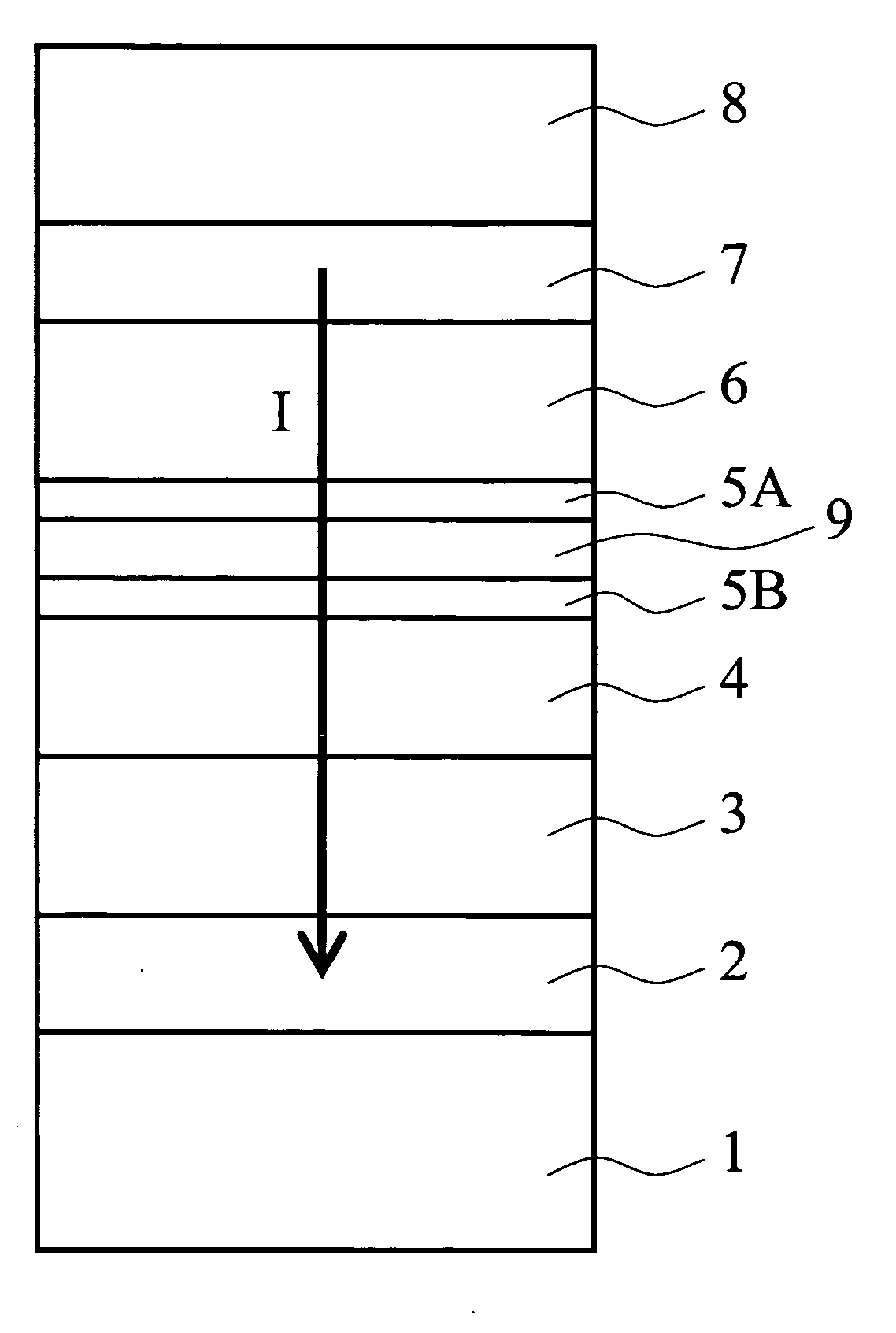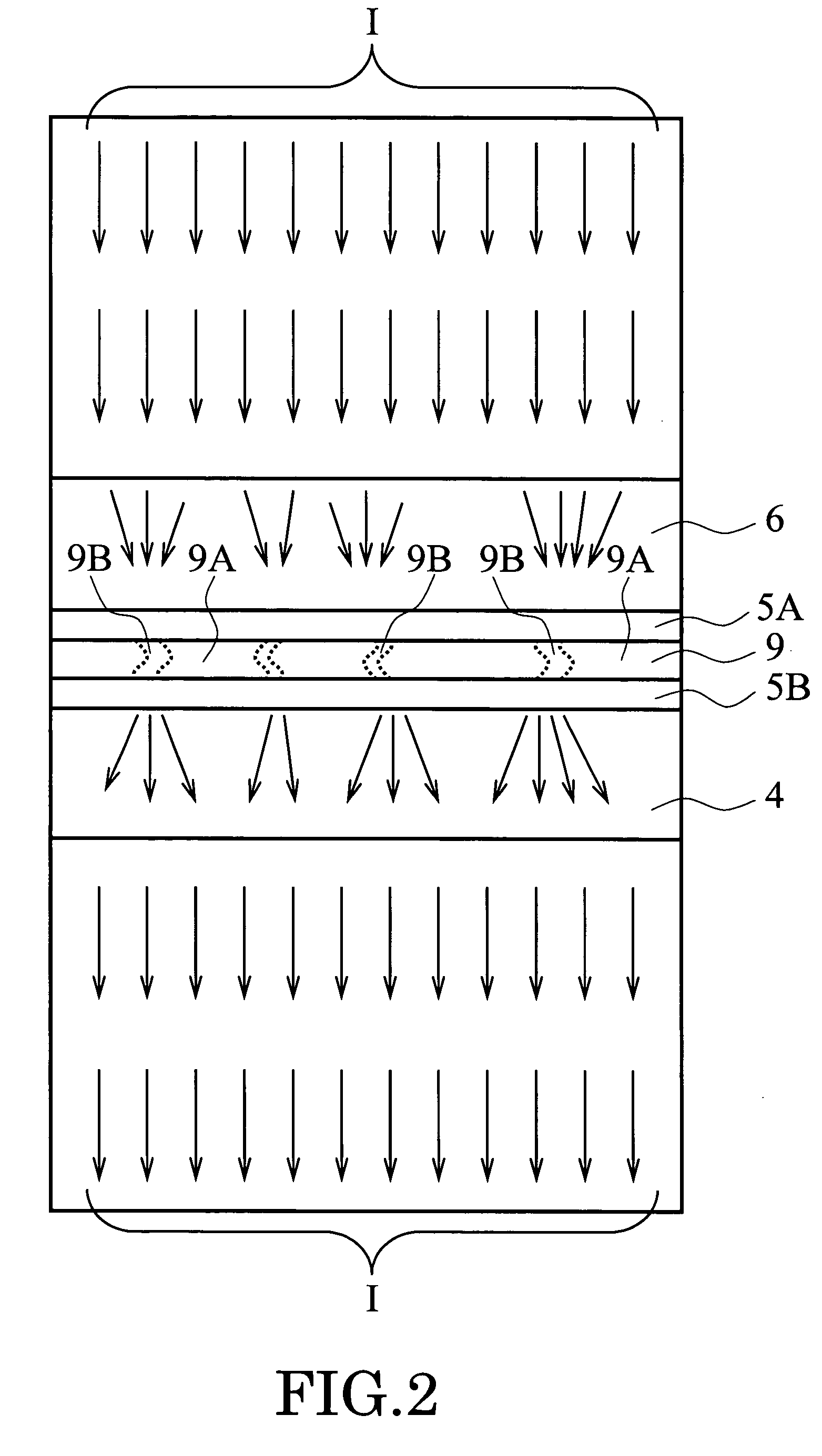Magnetoresistance effect element, magnetic head, and magnetic reproducing apparatus
- Summary
- Abstract
- Description
- Claims
- Application Information
AI Technical Summary
Benefits of technology
Problems solved by technology
Method used
Image
Examples
second example
[0275] Next, the magnetoresistance effect elements using the spinodal decomposition of aluminum (Al)-gold (Au) system will be explained as the second example of the invention.
[0276] Also in this example, the magnetoresistance effect elements shown in FIG. 1 were fabricated. However, the magnetically pinned layer 4 was made into the so-called "synthetic structure" in this example.
[0277] Moreover, the manufacturing method of this example is almost the same as that mentioned above about the first example. However, the phase separation layer 9 was formed, irradiating the ion beam containing oxygen ion on a substrate simultaneously with films formation.
[0278] The thickness and material of each layer which constitutes the magnetoresistance effect element are as the following:
[0279] Si substrate (1) / 5 nm Ta (2) / 200 nm Cu (2) / 5 nm (Ni.sub.80Fe.sub.20).sub.8Cr.sub.22 (2) / 10 nm PtMn (3) / 2.5 nm CoFe(4) / 0.9 nm Ru (4) / 2.5 nm CoFe (4) / 0.2 nm Cu (5A) / 0.8 nm AlAu (9) / 0.2 nm Cu (5B) / 3 nm CoFe (6) / 2 ...
third example
[0290] Next, the magnetoresistance effect elements using the spinodal decomposition of copper (Cu)-nickel (Ni)-iron (Fe) system will be explained as the third example of the invention.
[0291] Also in this example, the magnetoresistance effect elements shown in FIG. 1 were fabricated. However, the interface adjusting layer 5B was not provided, and the magnetically pinned layer 4 was made into the so-called "synthetic structure" in this example.
[0292] The thickness and material of each layer which constitutes the magnetoresistance effect element are as the following:
[0293] Si substrate (1) / 5 nm Ta (2) / 200 nm Cu (2) / 5 nm (Ni.sub.80Fe.sub.20).sub.78Cr.sub.22 (2) / 10 nm PtMn (3) / 2.5 nm CoFe (4) / 0.9 nm Ru (4) / 2.5 nm CoFe (4) / 0.8 nm CuNiFe (9) / 2.0 nm Cu (5) / 3 nm CoFe (6) / 2 nm Ta (7) / 200 nm Cu (8).
[0294] In the above, the reference numerals expressed in FIG. 1 are given to the each corresponding layer with parenthesis.
[0295] CuNiFe alloy used for the base material of the phase separation laye...
fourth example
[0307] Next, the magnetoresistance effect element which comprises two phase separation layers will be explained as a fourth example of the invention.
[0308] FIGS. 17 and 18 are schematic diagrams showing the cross-sectional structure of the magnetoresistance effect elements of this example. The same reference numerals are given to the same elements as what were mentioned above about FIG. 1 through FIG. 16 also about these figures, and detailed explanation is omitted.
[0309] That is, in the structure of FIG. 17, the phase separation layer 9 is inserted not only the portion of a spacer layer but in the magnetization pinned layer 4. Moreover, in the structure of FIG. 18, the phase separation layer 9 is inserted not only the portion of a spacer layer but in the magnetization free layer 6.
[0310] The magnetoresistance effect elements of this example were fabricated by the methods almost same as the method mentioned above about the first example.
[0311] The thickness and material of each laye...
PUM
 Login to View More
Login to View More Abstract
Description
Claims
Application Information
 Login to View More
Login to View More - R&D
- Intellectual Property
- Life Sciences
- Materials
- Tech Scout
- Unparalleled Data Quality
- Higher Quality Content
- 60% Fewer Hallucinations
Browse by: Latest US Patents, China's latest patents, Technical Efficacy Thesaurus, Application Domain, Technology Topic, Popular Technical Reports.
© 2025 PatSnap. All rights reserved.Legal|Privacy policy|Modern Slavery Act Transparency Statement|Sitemap|About US| Contact US: help@patsnap.com



